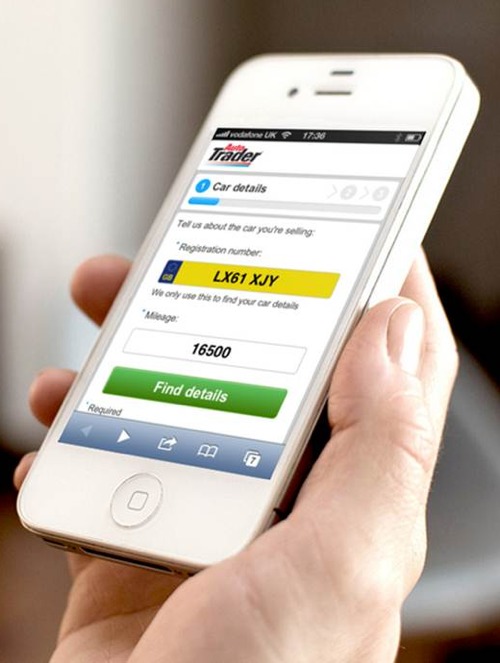Turning a traditional company into an internet-only operation isn’t hard. The hard bit is doing it while managing to still turn a profit.
And while many brands have struggled with the digital world, Auto Trader — one of my regular clients — has adapted impressively.
No more magazines
 The company was once best-known for its weekly magazine full of ads for new and used cars. But the last edition rolled off the presses around a year ago.
The company was once best-known for its weekly magazine full of ads for new and used cars. But the last edition rolled off the presses around a year ago.
Today, the company relies on its website and mobile apps to reach car buyers, sellers and owners.
I can’t claim any credit for that long-term success, of course. But I am pleased that the first Auto Trader project I worked on recently picked up Digital Product of the Year at the British Media Awards.
This substantial project was a complete rethink of the way people can advertise their cars through Auto Trader.
The vision was to create a process that would function across desktop and mobile devices, allowing users to switch to the most convenient device at any point.
For instance, if you need to take photos of your car, you can just grab your smart phone and upload them from there.
Simplifying a complex process
Creating an ad for your car is a complex process. You have to enter detailed information, upload images and constantly think about how to show your car in the best light.
I came into the project relatively late on, so most of the credit for the experience should go to the team that worked on it from the start.
However, I did craft virtually all the content in the process, from form labels and error messages to hint and help text. This consistent, friendly copy is designed to help and encourage visitors through the process.
Although very similar, the desktop and mobile experiences are tailored to take advantage of each device’s capabilities. This introduced the challenge of delivering subtly different content while maintaining a consistent, logical experience.
It took a while for everything to come together, but I think the result is a great example of the power of UX content and microcopy.
How did it turn out? You can see for yourself by creating an ad on Auto Trader. But as far as the British Media Awards go, it’s a winner.
Read my case study to learn more about this project.
 Most of the people I work with are lovely. But every freelance web copywriter has encountered a tricky client or two – and I’m no exception.
Most of the people I work with are lovely. But every freelance web copywriter has encountered a tricky client or two – and I’m no exception.
Sure, sometimes, it’s these tricky clients that are most enjoyable to work with. Getting to grips with a complex product or working through a complicated brief can be highly satisfying.
But there are some things us web copywriters don’t like hearing from clients. They set the alarm bells ringing. Here’s why…
1. “Will you do this copywriting job for free?”
Usually, this question is followed by a promise that “if things go well”, there’ll be “lots of paid work to come.” Invariably, this is untrue.
The work that us web copywriters do brings significant benefits to our clients. As a result, we expect to be paid a fair fee. (There may be the odd time when you’ll get some free web copywriting. But don’t hold your breath.)
2. “It’s perfect. I just have to get sign-off from my manager. And the product manager. And the MD.”
Editing is an important part of the copywriting process. Often, constructive feedback and the subsequent changes are what transform a good piece of work into a great piece of work.
But that’s only possible when feedback is clear and unambiguous. If several people need to be involved in the approval and sign-off process, it’s best for them all to review draft content at the same time. Often, different people have very different views on what needs changing, so feedback needs to be consolidated and agreed.
Any copywriter worth their salt will help you with this. For instance, a conference call with key people followed by a quick email confirming the scope of changes can work wonders.
3. “Can we get those amendments back today?”
Usually, this request comes after a client has taken several weeks or months to send their own feedback to the writer.
It’s not that we don’t want to deliver, you understand. But in the same way that many clients are too busy to be able to review draft content immediately, good web copywriters won’t always be able to drop everything to hit a short-notice deadline.
(Depending on the project, I try to agree a clear schedule which includes dates for delivery of draft content, feedback and edits.)
4. “I’d write it myself, except I don’t have the time.”
I’m a professional writer, skilled at crafting content for the web that delivers tangible benefits to my clients.
I can help increase your sales, create a distinctive image for your business and talk to your customers in their language. And I want to work with clients who recognise me for those skills.
5. “No, I’m afraid we don’t sign contracts.”
I have been incredibly lucky with the clients I’ve worked with. Almost without exception, they pay up reliably and on time. Having heard many horror stories, I’m very grateful for this.
But I still get nervous when new clients aren’t willing to sign a copywriting contract or commit to anything more than a verbal agreement. A clear, simple contract protects both parties, and is one of the key foundations of a good working relationship.
 The company was once best-known for its weekly magazine full of ads for new and used cars. But the last edition rolled off the presses around a year ago.
The company was once best-known for its weekly magazine full of ads for new and used cars. But the last edition rolled off the presses around a year ago.
 Most of the people I work with are lovely. But every freelance web copywriter has encountered a tricky client or two – and I’m no exception.
Most of the people I work with are lovely. But every freelance web copywriter has encountered a tricky client or two – and I’m no exception.